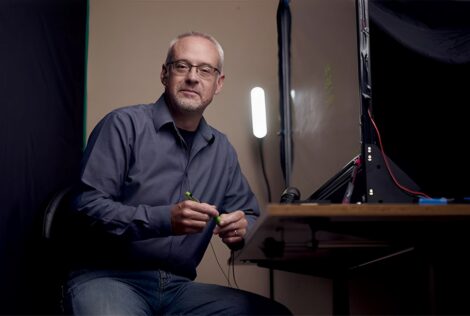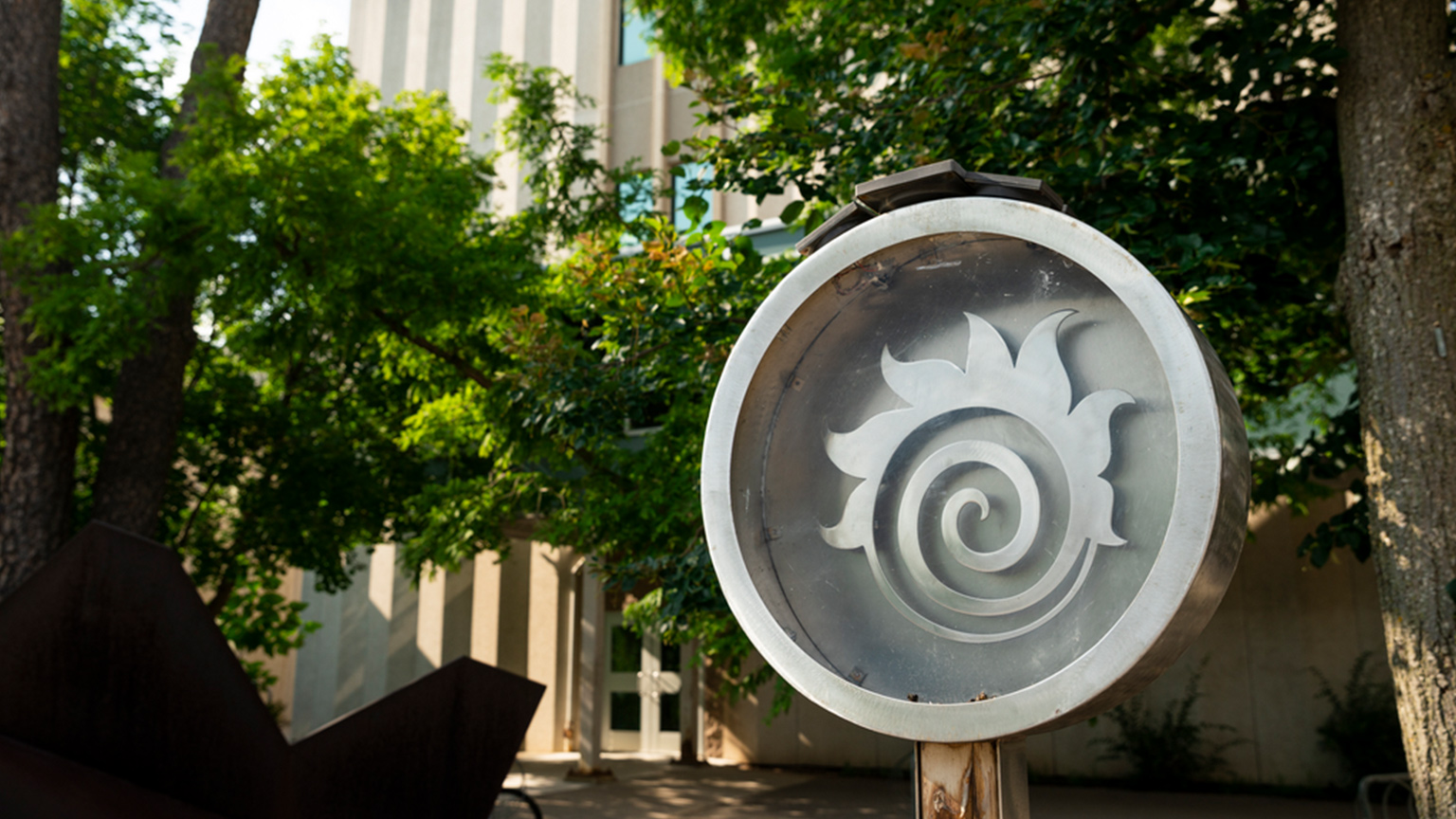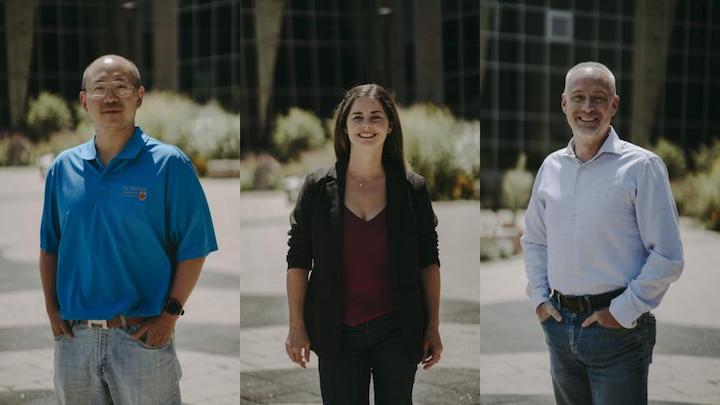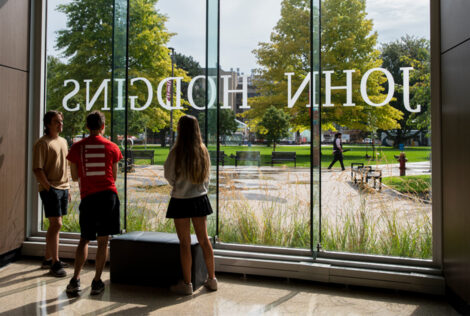

Part 1: Here are the stories of three engineering educators at McMaster, who are pioneering new ways to teach and learn from home. Hear from Qiyin Fang, Elizabeth Hassan and Michael Justason from the Faculty of Engineering.
“McMaster Engineering is a community that pivots,” says Ishwar K. Puri, dean of the Faculty of Engineering.
“Our researchers, instructors, staff, and students are quick to embrace change and meet new challenges — and no challenge has been greater than COVID-19.”
How to teach engineering in a virtual world? From augmented reality to lightboards to enhanced instructional supports, McMaster Engineering instructors have quickly pivoted to ensure students will still get the most out of their education.
Puri notes the Faculty of Engineering has invested close to $1.5 million to support instructors as they transition to virtual teaching. This curriculum transformation is an integral part of The Pivot, a reimagined approach to undergraduate teaching, learning, and research that McMaster Engineering will launch in the fall.

The first in a series of two articles, here are the stories of three engineering educators at McMaster, who are pioneering new ways to teach and learn from home.
How smart is your home?
“Similar to all the programs in Mac Engineering, we’re making the most of virtual labs at home,” says Qiyin Fang, professor in the Department of Engineering Physics. He’s currently creating a new lab course on smart systems.
“We started to design it in March as an on-campus offering,” says Fang. Then the COVID-19 shutdown happened. A quick pivot later, he reimagined the course so that students will build and test smart systems in their own homes.
There’s an advantage to this. Initially, the class was designed to take place “in a basement pseudo-house,” says Fang. “Now, students can customize and test in a real home.”
He points out that people are now spending much more time at home. Add to that an aging population. Smart homes provide support for mobility and accessibility needs, as well as optimal aging.
Jana Strizak, a recent Engineering Physics grad, is working with Fang over the summer to design the curriculum. (She’s also a member of the McMaster team collaborating on a project to modify sleep apnea machines into ventilators.)
Strizak will send building kits to the students and prepare online instructions and video tutorials. Students will have the support of teaching assistants and there will be regular online lab hours. “And there will be exactly the same manufacturing problem-solving component,” she says.
Read more about research on smart homes by Qiyin Fang and his team.
Please do try this at home
“As engineers, we’re always making optimization decisions,” says Elizabeth Hassan, assistant professor in the Department of Mechanical Engineering. Redesigning her curriculum for online-only is another interesting problem to solve — even if some of her courses involve building prototypes in a lab.
Hassan always customizes her approach to the specific needs of a course. “I look at the purpose for the prototypes,” says Hassan, a teaching-track faculty member who has received an Educating the Engineer of 2025 award. For example, some prototypes are for communication, while others are for testing.
“So, I choose the tools and approaches that align with what we want the students to learn.”
For her class in Mechanical Engineering Design, students will build early-stage prototypes using materials they find in their homes. But the learning process will remain the same: Design, build, and test assumptions to confirm or refute.
“The tool itself is secondary,” says Hassan. “What’s most important is that the right supports are in place for the students.”
She’s spending the summer creating high-quality instructional materials, and she credits McMaster Engineering’s technical and administrative staff, who are busy preparing for the fall. “They’re doing an awesome job of ensuring our students will have a great experience.”
Does this mean she’ll be teaching her lab courses virtually, post-pandemic? Definitely not. “We have amazing technical facilities at McMaster. As soon as I can get back in the shop, I’m there!”
Lighting the way
“I like teaching. That’s why I’m here,” says Michael Justason, assistant professor in the W Booth School of Engineering Practice and Technology.
Clearly, the feeling is mutual. He received the 2019 President’s Award for Outstanding Contributions to Teaching and Learning, McMaster’s highest teaching honour.
Justason uses an inventive new tool to engage students in virtual learning. Lightboards allow you to stand, gesture, and face the camera, while presenting your slides and other pre-recorded content on a vertical glass surface in front of you. Even better, you can scribble and draw on the glass in real time.
“This is a wonderful substitute for the traditional whiteboard or blackboard,” says Justason. He likens the technology to how weather reporters create the illusion of standing in the middle of their maps and data.
Justason first used a lightboard in 2016 while working with the MacPherson Institute. COVID-19 suddenly made the technology even more appealing. He quickly collaborated with Adrian Kitai (professor in Engineering Physics/Materials Science and Engineering), who built a full-size prototype for him.
Justason has spent the summer experimenting in his home studio, offering test lectures, and taping an instructional video. “I believe that live, synchronous teaching with pre-recorded content is the future of education,” he says. He notes the instructor can add a tool like Zoom to interact with students in real time.
“The lightboard allows for a connection between teacher and student,” says Justason. “Anything I can do to build that relationship will make for a better learning experience.”
Read the previous series on innovative COVID-related research from McMaster engineers who are collaborating on developing masks, face shields, and ventilators.
Read more on how McMaster Engineering has pivoted during COVID-19 in a message from Ishwar K. Puri, dean of the Faculty of Engineering.


